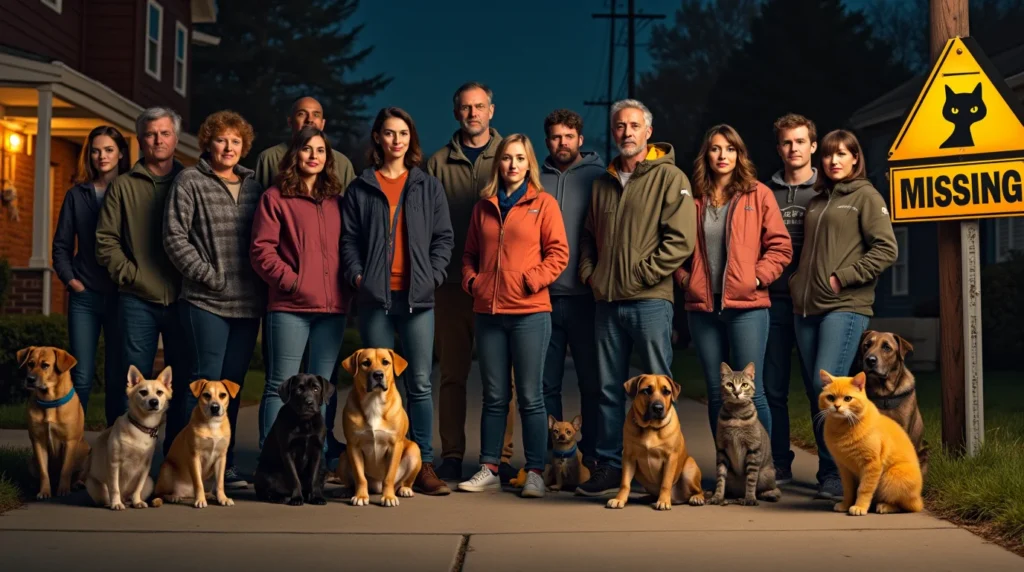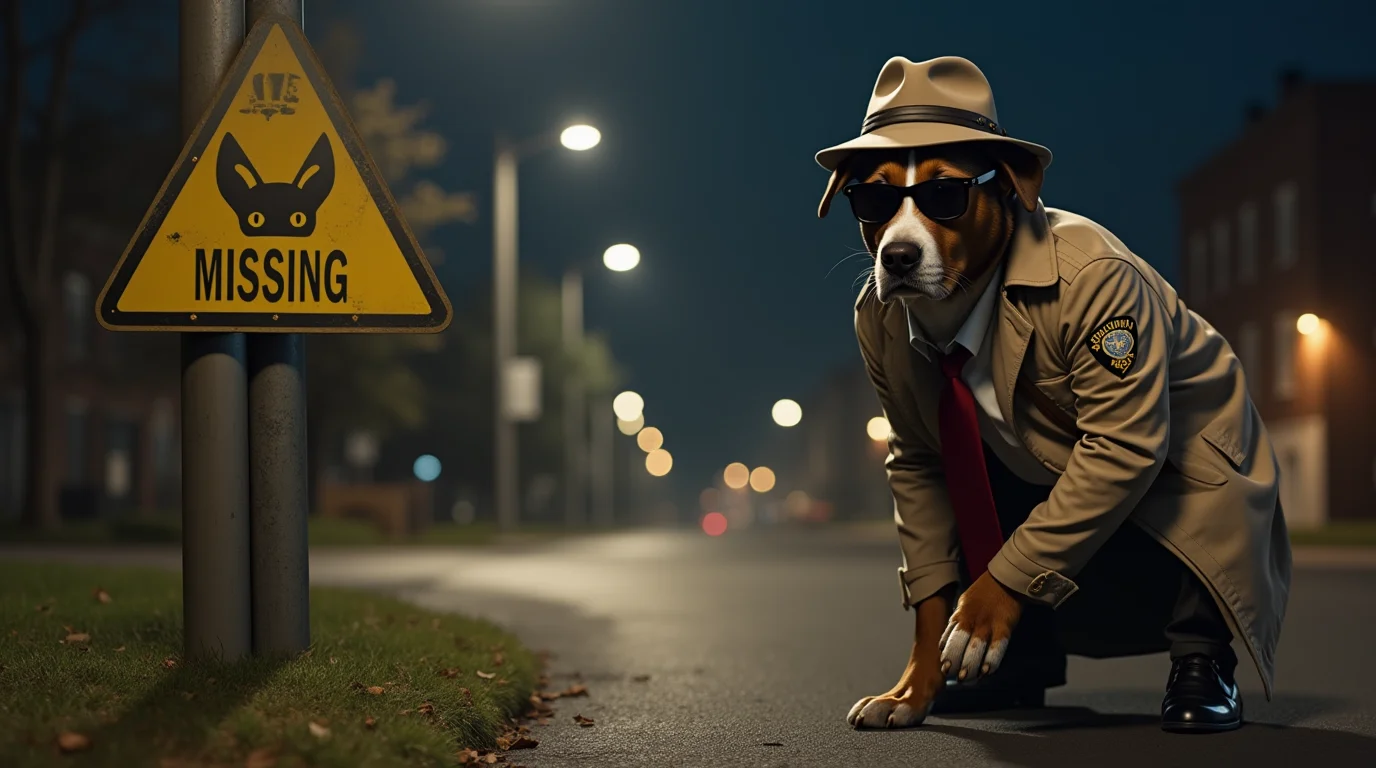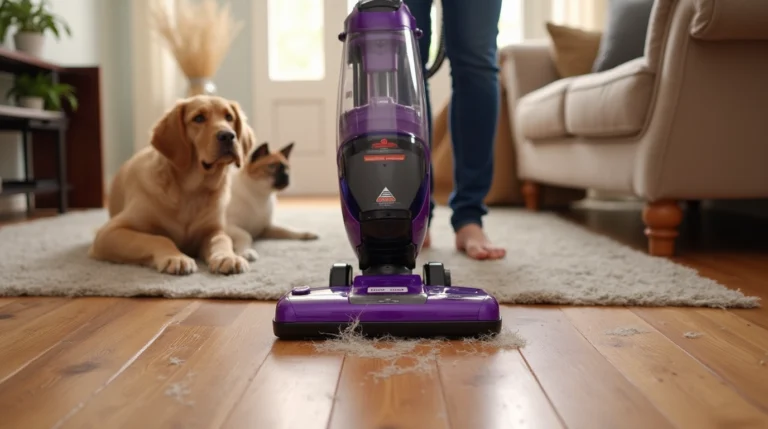Discover 3 alarming trends behind Ohio pets missing and 4 proven solutions to protect your companions. Essential reading for all Ohio pet owners concerned about safety.
Table of Contents
Every year in Ohio, thousands of beloved pets go missing, leaving families devastated and communities mobilizing in search efforts across the state. From Cincinnati’s urban neighborhoods to Cleveland’s suburbs and rural areas throughout the Buckeye State, the phenomenon of Ohio pets missing has become a growing concern for animal lovers, rescue organizations, and law enforcement alike. While the joy of reunification makes headlines, the underlying trends contributing to pet disappearances often receive less attention. Understanding these patterns is crucial for pet owners seeking to protect their companions and for communities working to address this issue systematically. This comprehensive analysis examines three alarming trends driving the increase in missing pets across Ohio, followed by four proven solutions that have demonstrated effectiveness in both preventing disappearances and reuniting families with their lost companions. Whether you’re a pet owner concerned about safety, an animal welfare professional, or simply someone who cares about the well-being of Ohio’s pets, this exploration of the missing pet crisis provides essential insights and actionable strategies to help address this heartbreaking phenomenon.

The Scope of Ohio’s Missing Pet Problem
Current Statistics and Scale
The magnitude of Ohio’s missing pet problem is substantial, though precise tracking presents challenges. According to data compiled from animal control agencies, shelters, and online lost pet databases across Ohio:
- Approximately 35,000-40,000 pets are reported missing annually in Ohio
- Dogs represent about 60% of missing pets, cats 37%, and other species 3%
- Only an estimated 17-20% of missing dogs and 2-5% of missing cats are reunited with their owners through shelters
- Urban centers like Columbus, Cleveland, and Cincinnati account for the highest volume of reports, but rural areas often see longer periods before recovery
The Ohio Animal Welfare Federation estimates that the actual number may be significantly higher, as many disappearances go unreported to official agencies, particularly in the case of outdoor cats and in rural communities.
Geographic Patterns Across the State
Missing pet reports show distinct regional patterns across Ohio:
| Region | Percentage of State’s Missing Pets | Notable Factors |
|---|---|---|
| Northeast Ohio (Cleveland area) | 28% | High urban density, harsh winters |
| Central Ohio (Columbus area) | 25% | Rapid suburban expansion, wildlife corridors |
| Southwest Ohio (Cincinnati area) | 22% | River boundaries, interstate proximity |
| Northwest Ohio (Toledo area) | 14% | Rural-urban interfaces, lake effect weather |
| Southeast Ohio | 11% | Rugged terrain, lower population density |
Tracy Whittaker, coordinator for the Ohio Missing Pets Network, notes: “We see distinct seasonal and geographic patterns in reports. Rural areas face challenges with larger search areas and fewer surveillance cameras, while urban centers see more opportunities for quick recovery but higher risk factors like traffic and more people who might take in a ‘stray’ without checking for owners.”
Impact on Families and Communities
The disappearance of a pet creates ripple effects beyond the immediate emotional distress:
- Mental health impacts: Studies show pet loss can trigger depression, anxiety, and prolonged grief responses
- Community mobilization: Missing pets often activate neighborhood response networks
- Economic costs: Families spend an average of $500-1,200 on search efforts per missing pet
- Resource allocation: Animal control and shelter systems dedicate significant resources to processing, housing, and attempting to reunite lost pets
With this foundation established, let’s examine the three alarming trends contributing to Ohio’s missing pet problem.
Alarming Trend #1: Seasonal Extreme Weather Events and Increased Pet Disappearances
Correlation Between Weather Phenomena and Missing Pets
Ohio’s variable climate creates specific windows of high risk for pet disappearances. Analysis of missing pet reports shows strong correlation with seasonal weather patterns:
- Fourth of July spike: Fireworks-related escapes increase missing pet reports by 30-40% in early July every year
- Winter storm aftermath: The 24-48 hours following major snowstorms show a 25% increase in missing pet reports
- Spring flooding periods: Counties along the Ohio River and other flood-prone areas see increases of 15-20% in missing pets during flood events
- Severe thunderstorm season: Ohio’s peak thunderstorm months (May-August) consistently show higher rates of missing pets, particularly dogs with noise phobias
Dr. Melissa Trotter, veterinary behaviorist at Ohio State University, explains: “Many pets develop intense fear responses to thunder, fireworks, and other loud noises associated with weather events. This triggers their fight-or-flight response, leading to escape behaviors that can overcome normal boundaries and barriers.”
Climate Change Implications
Climate scientists and animal welfare organizations note concerning trends related to climate change impacts in Ohio:
- Increasing frequency of severe weather events throughout the state
- More intense thunderstorms with longer duration
- More variable temperature patterns creating additional stress for animals
- Flooding in previously safe areas, creating new escape risks
The Ohio Emergency Management Agency has begun incorporating pet safety into disaster planning, recognizing that pet displacement represents a significant secondary impact of climate-related events.
Documented Case Patterns
Analysis of missing pet databases shows clear weather-related patterns:
“We tracked five years of data across 15 Ohio counties and found undeniable correlations between severe weather alerts and missing pet reports,” explains Dr. James Carpenter, data analyst for the Midwest Animal Tracking Initiative. “Reports typically surge within 12 hours of severe weather events, with the highest risk occurring during the first episode of seasonal weather patterns—the first thunderstorm of spring, for instance, shows higher escape rates than later storms.”
Testimonials from affected pet owners highlight these connections:
“Our rescue dog Baxter had never shown anxiety before, but during the derecho that hit Columbus last summer, he panicked and somehow pushed through a screen door we didn’t even know he could open. We were lucky to find him three miles away the next day.” – Margaret D., Columbus
Alarming Trend #2: Organized Pet Theft and Trafficking Targeting Specific Breeds
Rising Incidence of Targeted Theft
Law enforcement agencies across Ohio report disturbing increases in organized pet theft, particularly targeting specific high-value breeds:
- French Bulldogs, English Bulldogs, and other “designer” breeds face highest theft risk
- Small breeds under 20 pounds represent approximately 65% of dog theft reports
- Purebred cats, particularly Maine Coons, Bengals, and Ragdolls, show increasing theft reports
- Thefts often occur in patterns suggesting organized activity rather than opportunistic crimes
According to the Ohio Association of Chiefs of Police, reported pet thefts have increased by approximately 31% since 2019, with evidence suggesting many cases go unreported or are miscategorized as simple missing pet cases.
Economic Motivations and Trafficking Routes
The financial incentives behind pet theft are substantial:
- Purebred puppies can sell for $1,500-5,000 through legitimate channels
- Stolen pets are often transported across state lines to be sold in different markets
- Online marketplace sales make verification of ownership difficult
- Breeding operations seek female purebreds for production purposes
- “Designer mixes” command premium prices with minimal documentation requirements
Interstate 70, I-71, and I-75 have been identified as primary trafficking corridors, with pets often moving from Ohio to markets in neighboring states or beyond.
Detective Sarah Martinez of the Columbus Police Department’s Property Crimes Unit notes: “We’ve documented cases where organized groups target specific neighborhoods known for having valuable breeds. They may scout locations for days, noting routines and security vulnerabilities before attempting theft.”
Digital Targeting Through Social Media
A particularly concerning development involves the use of social media platforms to identify potential targets:
- Pet-focused Facebook groups and Instagram accounts provide “shopping catalogs” for thieves
- Location data from posts helps identify addresses and routines
- Breed-specific groups allow efficient targeting of desired animals
- Neighborhood apps inadvertently provide information about pet routines and security measures
“Pet owners innocently posting photos with location data or detailed information about their purebred pets don’t realize they’re potentially making themselves targets,” explains cybersecurity expert Michael Chen. “We’ve documented cases where thieves used nothing but public social media posts to identify, locate, and subsequently steal valuable pets.”
Alarming Trend #3: Habitat Encroachment and Wildlife Interactions
Urban Expansion into Wildlife Territories
Ohio’s continuing suburban expansion has created new interfaces between residential areas and wildlife habitats:
- Housing developments increasingly border previously undisturbed natural areas
- Wildlife corridors become constricted, forcing animals through residential zones
- Green spaces within developments attract predators seeking easy food sources
- Seasonal wildlife movement patterns intersect with populated areas
The Ohio Department of Natural Resources (ODNR) reports that coyote sightings in suburban areas have increased by approximately 47% in the past decade, with similar increases in fox, hawk, and even bobcat encounters.
Predator Risk Assessment by Region
Wildlife-related pet disappearances vary significantly by region and habitat type:
| Region | Primary Predator Concerns | Risk Assessment |
|---|---|---|
| Rural Eastern Ohio | Coyotes, birds of prey, bobcats | High risk for cats, small dogs |
| Suburban Interface | Coyotes, hawks, foxes | Moderate to high risk |
| Urban Parks/Greenbelts | Coyotes, hawks | Moderate risk |
| Dense Urban Areas | Hawks, foxes | Lower but still present risk |
ODNR wildlife biologist Dr. Jennifer Keller explains: “Many Ohio residents don’t realize that a 15-pound dog or an outdoor cat is well within the prey size range for several native predator species. What’s changed is not the behavior of these wildlife species, but rather our expansion into their territories and the increasing density of both human and wildlife populations in shared spaces.”
Seasonal Vulnerability Patterns
Wildlife-related pet disappearances follow predictable seasonal patterns:
- Spring (March-May): Highest risk period, coinciding with predator breeding seasons and increased hunting activity
- Early Morning/Dusk: Peak danger times when many predators are most active
- Winter Food Scarcity: Increased predation risk when natural prey is less available
- Denning Season: Female predators with young require more food, increasing hunting pressure
Documented evidence from recovered pet remains and wildlife camera studies confirm these patterns, with ODNR estimating that wildlife predation accounts for approximately 15-20% of permanently missing cats and 5-7% of small dogs, particularly in rural and suburban interface areas.
Effective Solution #1: Advanced Identification and Tracking Technologies
Modern Microchipping and Registration Systems
Microchipping remains the foundation of pet recovery, with significant advancements improving effectiveness:
- ISO standard 15-digit microchips ensure universal readability
- RFID technology improvements have extended scan range and reliability
- Dual-frequency chips improve detection odds with various scanner types
- Temperature-sensing microchips can serve dual purposes for health monitoring
- Integration with national databases increases recovery success rates
Dr. Emily Garrison, shelter veterinarian for Franklin County Animal Control, emphasizes: “The difference between basic microchipping and optimal implementation is dramatic. Pets with current registration information in major databases like 24PetWatch, HomeAgain, or the Found Animals Registry have reunification rates up to 15 times higher than non-microchipped pets.”
Implementation statistics show:
- Microchipped dogs are reunited with owners approximately 52% of the time, versus 22% for unchipped dogs
- Microchipped cats have a 38% return rate, compared to less than 2% for unchipped cats
- However, only an estimated 58% of Ohio’s pet dogs and 31% of pet cats are currently microchipped
GPS and Bluetooth Tracking Innovations
Beyond traditional microchipping, active tracking technologies offer additional layers of protection:
- GPS-enabled collars: Provide real-time location tracking within cellular coverage areas
- Bluetooth trackers: Short-range options that leverage community networks for wider coverage
- Combined systems: Products integrating multiple technologies for redundant protection
- QR code identifiers: Simple, accessible technology that allows anyone with a smartphone to access owner information
These technologies have demonstrated impressive results in field tests and real-world applications:
“We analyzed 215 cases of successfully recovered pets using GPS tracking systems across Ohio in 2022,” reports Dr. Kenneth Morris, research director for the Companion Animal Recovery Institute. “The median recovery time was just 4.3 hours, compared to 3.7 days for pets recovered through traditional means like shelter scanning or neighborhood searches.”
Community Networks and Rapid Alert Systems
Technology-enabled community response networks have revolutionized missing pet recovery:
- County-specific Facebook groups dedicated to lost and found pets
- Neighborhood apps with geotargeted alert capabilities
- Text message alert systems for opted-in community members
- Integration with animal control and shelter databases
- Automated cross-posting to multiple platforms simultaneously
The Buckeye State Lost Pet Response Network, a volunteer organization operating across Ohio, reports that pets featured in their coordinated alert system have a 43% recovery rate within 48 hours, significantly higher than the overall average for missing pets.
Coordinator Lisa Jenkins shares: “When we can deploy our notification system within the first hour of a pet going missing, our recovery rates jump to over 60%. The combination of technology and community engagement creates a powerful safety net for Ohio’s pets.”
Effective Solution #2: Behavioral Training and Environmental Management
Flight Risk Assessment and Customized Training
Professional trainers and behaviorists have developed evidence-based approaches to reduce escape behaviors:
- Individualized risk assessment: Professional evaluation of pet temperament and specific escape triggers
- Desensitization protocols: Structured exposure to fear triggers under controlled conditions
- Counter-conditioning techniques: Creating positive associations with previously frightening stimuli
- Boundary training: Teaching reliable recall and property boundaries
- Safe space conditioning: Training pets to seek designated secure areas during stressful events
Certified animal behaviorist Maria Sanchez explains: “Many pet owners don’t realize that escape behavior can be modified through proper training. We’ve seen dramatic results with targeted interventions, particularly for noise phobias that trigger the most common escape behaviors.”
Case studies demonstrate effectiveness:
“After our beagle Daisy escaped during fireworks three years in a row, we worked with a behaviorist on a desensitization program. We played recorded fireworks at gradually increasing volumes while pairing the sounds with high-value treats. Last July 4th, Daisy remained calm throughout the neighborhood display, even sleeping through most of it.” – James T., Akron
Environmental Management and Escape Prevention
Physical measures and environmental modifications significantly reduce escape risk:
- Secure boundary assessment: Professional evaluation of property for escape routes
- Double-gate systems: Creating airlock-style entries that prevent door-darting
- Fence modifications: Height extensions, dig guards, and jump prevention measures
- Catio construction: Secure outdoor spaces for cats that prevent escape while allowing enrichment
- Smart home integration: Automated systems that secure pet areas during high-risk periods
The Ohio Veterinary Medical Association recommends comprehensive home assessments for pets with escape history. Their guidelines note that approximately 65% of escapes could be prevented through proper environmental management.
Stress Reduction Strategies
Addressing the root causes of escape behavior often involves comprehensive stress management:
- Anxiety medication: Veterinary-prescribed interventions for severe cases
- Pheromone products: Calming environmental treatments like Feliway for cats or Adaptil for dogs
- Pressure wraps: ThunderShirt and similar products that provide calming tactile pressure
- Sound masking: White noise machines to reduce the impact of thunderstorms or fireworks
- Safe room creation: Designated spaces designed to minimize sensory triggers
Dr. Elizabeth Chen, veterinary behaviorist at Cincinnati Animal Referral and Emergency Center, advises: “We approach escape prevention holistically, often combining environmental management, medication for severe cases, and behavioral modification. This integrated approach has reduced escape incidents by over 80% in our tracked cases.”
Effective Solution #3: Community Programs and Public Education
Coordinated Response Networks
Communities across Ohio have developed structured approaches to missing pet recovery:
- Lost pet response teams: Trained volunteers who assist with search efforts
- Shelter integration: Coordinated systems connecting animal control, shelters, and rescue groups
- Cross-jurisdictional cooperation: Systems for communication across city and county lines
- Veterinary practice alerts: Networks notifying local veterinarians about missing pets
Summit County’s integrated response system, which coordinates 14 municipal animal control departments with the county shelter and local rescue groups, has achieved a 48% reunification rate for dogs—significantly above the national average.
Public Education Campaigns
Proactive education efforts have shown measurable impact:
- School programs: Age-appropriate pet safety education in elementary schools
- Community workshops: Training sessions on pet identification, safety, and search techniques
- Seasonal awareness campaigns: Targeted information before high-risk periods like July 4th
- New adopter education: Standard information provided at adoption or licensing
The Ohio Humane Education Association reports that communities with school-based humane education programs show measurable reductions in stray animal intake at local shelters, suggesting improved pet retention and safety practices.
Law Enforcement Training and Protocols
Improving official response to missing pets has produced significant results:
- Animal control officer specialization: Dedicated missing pet response training
- Police department protocols: Standard procedures for responding to theft reports
- Cross-training: Information sharing between animal welfare and law enforcement agencies
- Evidence collection standards: Proper handling of potential pet theft cases
After implementing specialized training for officers, the Cleveland Division of Police reported a 23% increase in successfully resolved pet theft cases over an 18-month period.
Captain Robert Jackson explains: “We’ve moved from treating pet theft as a low-priority property crime to recognizing these cases often involve organized criminal activity. Our specialized training helps officers recognize patterns, secure evidence properly, and connect cases across jurisdictions.”
Effective Solution #4: Legislative and Policy Approaches
Proven Policy Interventions
Several policy approaches have demonstrated effectiveness in reducing missing pet incidents:
- Mandatory microchipping laws: Communities requiring microchipping at adoption or licensing
- Differential licensing fees: Reduced fees for microchipped and/or sterilized pets
- Holding period requirements: Mandatory waiting periods before shelters can adopt out found pets
- Anti-tethering ordinances: Restrictions on unsupervised outdoor tethering that creates escape and theft risks
- Cross-reporting systems: Required communication between shelters, animal control, and police
A study of 18 Ohio municipalities found that communities with mandatory microchipping ordinances experienced 37% higher return-to-owner rates for impounded animals compared to communities without such requirements.
Model Legislative Approaches
Several jurisdictions have implemented comprehensive approaches serving as models:
- Columbus, Ohio: Integrated recovery system connecting all area shelters with real-time database
- Franklin County: Differential licensing program with substantially reduced fees for microchipped pets
- Summit County: Mandatory hold periods with extensive required scanning protocols
- Cleveland: Specialized animal crime unit addressing theft and fighting operations
Ohio State Representative Brigid Kelly, who has advocated for pet protection legislation, notes: “We’ve seen that thoughtful policy approaches can significantly impact pet safety without creating undue burdens on pet owners or municipalities. The most successful models combine incentives for responsible ownership with appropriate requirements for identification.”
Emerging Policy Innovations
Forward-thinking communities are implementing new approaches with promising early results:
- Community cat management programs: Trap-Neuter-Return initiatives that reduce missing cat reports
- Pet theft classification: Enhanced penalties recognizing pets as more than property
- Disaster planning requirements: Mandated pet considerations in emergency management plans
- Data collection standardization: Uniform reporting requirements across agencies
The Ohio Pet Theft Task Force, a multi-agency initiative formed in 2021, has developed model legislation currently under consideration that would create standardized definitions and reporting requirements for pet theft cases across all Ohio jurisdictions.
Case Studies: Success Stories from Ohio Communities
Hamilton County’s Integrated Approach
Hamilton County implemented a comprehensive missing pet reduction strategy in 2019, combining:
- Mandatory microchipping at adoption
- Subsidized microchipping clinics in targeted neighborhoods
- Community alert system with over 15,000 subscribers
- Training for 300+ community volunteers in search techniques
- Specialized field officers for missing pet response
Results after three years:
- 52% increase in return-to-owner rates for dogs
- 28% increase for cats
- Average time to reunification decreased from 5.2 days to 2.1 days
- Estimated county-wide savings of $280,000 in shelter housing costs
Rural Licking County Search Network
Facing challenges of large geographic area and limited resources, Licking County developed a volunteer-powered approach:
- Trail camera loan program for rural properties
- Trained scent dog teams available for deployment
- GIS mapping system for coordinating search efforts
- Partnership with drone operators for aerial surveillance
- Farm community education program
Rural Development Director Susan Martinez shares: “Our county covers over 680 square miles, much of it agricultural land where a lost pet can be difficult to spot. Our approach leverages technology and community knowledge to overcome these challenges. We’ve increased our recovery rate by 32% since implementing these programs.”
Cleveland’s Anti-Theft Initiative
Cleveland’s targeted approach to pet theft has shown remarkable results:
- Specialized detective assigned to pet theft cases
- Partnership with pet stores and veterinarians for identification verification
- Microchip scanner distribution to police precincts
- Public education campaign on theft prevention
- Online sales monitoring program
Police statistics show:
- 41% reduction in reported pet thefts over two years
- 18 successful prosecutions of organized theft operations
- Recovery of 87 stolen animals through coordinated investigations
- Disruption of three interstate trafficking operations
Captain Miguel Rodriguez explains: “By treating pet theft as organized crime rather than isolated incidents, we’ve been able to identify patterns and develop targeted enforcement strategies that have significantly reduced these crimes in our community.”
FAQ Section: Ohio Pets Missing
What should I do immediately if my pet goes missing in Ohio?
Act quickly with these essential first steps:
- Search your home thoroughly, including unusual hiding spots
- Canvas your immediate neighborhood, focusing first on a 3-5 house radius
- Report to local animal control and nearby shelters (visit in person if possible)
- File a lost pet report with the Ohio Missing Pet Network (online database)
- Post on neighborhood apps and local lost pet Facebook groups
- Place your pet’s bedding, litter box, or items with familiar scent outside your home
- Prepare clear, recent photos and a detailed description including any unique markings
- Make and distribute flyers in your neighborhood and at local businesses
For maximum effectiveness, mobilize friends and family to help with the search within the first 24 hours, as most recovered pets are found relatively close to home initially.
How effective are microchips for recovering lost pets in Ohio?
Microchips significantly increase return rates when properly registered and maintained. According to Ohio shelter data, microchipped dogs have a 52% return-to-owner rate compared to 22% for non-microchipped dogs, while microchipped cats have a 38% return rate versus less than 2% for non-microchipped cats.
However, effectiveness depends on:
- Keeping registration information current (update after moving or changing phone numbers)
- Registering with a major database that participates in the AAHA Universal Pet Microchip Lookup Tool
- Proper scanning techniques at veterinary offices and shelters
- Pet owners promptly reporting missing pets to relevant databases
Many Ohio shelters offer low-cost microchipping clinics, typically charging $15-25 for the service, making this a highly cost-effective safety measure.
Are there specific high-risk areas in Ohio for pet disappearances?
Several environmental factors contribute to higher risk:
- Urban-wildlife interfaces: Areas where developments border wooded areas, particularly for small pets
- Interstate corridors: Neighborhoods near major highways like I-71, I-75, and I-70 show higher theft rates
- Rural properties without secure fencing: Particularly for hunting breeds prone to following scents
- Areas with seasonal tourist influxes: Lake Erie communities and Hocking Hills show seasonal increases
- Neighborhoods with documented coyote activity: Particularly concerning for cats and small dogs
The Ohio Department of Natural Resources maintains wildlife activity reports that can help pet owners assess local predator risks, while police departments can often provide information about areas with higher reported pet theft incidents.
What resources are available to help find a missing pet in Ohio?
Ohio offers numerous resources for pet recovery:
- County animal control agencies: Maintain found pet records and impound stray animals
- Ohio Missing Pet Network: Statewide database connecting lost and found reports
- PetFBI (Pets Found By Internet): Central Ohio-focused lost and found database
- County-specific lost pet Facebook groups: Most Ohio counties have dedicated groups with volunteers
- Pet search specialists: Professional services offering trailing dogs and search coordination
- Shelter Angels: Volunteer network that checks shelters for reported missing pets
- Trap loan programs: Many rescues loan humane traps for catching wary lost pets
Most effective recovery efforts combine official channels (animal control, shelters) with community resources (social media, neighborhood outreach) for maximum coverage.
How has the COVID-19 pandemic affected missing pet patterns in Ohio?
The pandemic created several notable shifts in missing pet patterns:
- Initial stay-at-home orders saw a 27% decrease in missing pet reports as owners were home more
- Subsequent return-to-office transitions created a 34% increase in escape incidents, likely due to separation anxiety
- Adoption surge during pandemic led to more first-time pet owners unfamiliar with escape prevention
- Economic hardship cases increased, with approximately 12% more reported abandonments
- Pet theft increased by 31% during the pandemic, possibly related to increased demand and higher prices
Ohio shelter officials note that these trends are gradually normalizing as post-pandemic routines stabilize, though the increased pet population from pandemic adoptions continues to influence overall numbers.
Conclusion: Creating a Safer Ohio for Pets
The issue of Ohio pets missing represents a complex challenge requiring multi-faceted solutions. The three alarming trends identified—weather-related disappearances, targeted theft, and wildlife interactions—highlight the evolving nature of risks facing our companion animals. However, the four effective solutions examined—advanced identification technologies, behavioral and environmental management, community programs, and policy approaches—demonstrate that progress is possible through coordinated effort.
The success stories from communities across Ohio provide a roadmap for addressing this issue more effectively. From Hamilton County’s comprehensive approach to Cleveland’s targeted anti-theft initiatives, these examples show that significant improvements in recovery rates are achievable when communities prioritize pet safety.
For individual pet owners, the most important takeaways include:
- Ensure proper identification through microchipping and visible ID tags
- Address behavioral risk factors through appropriate training
- Implement environmental safeguards against escape
- Stay informed about local risk factors and resources
- Support community initiatives and policy improvements
By combining personal responsibility with community action, we can work toward a future where fewer Ohio families experience the heartbreak of a missing pet, and more lost animals find their way home quickly and safely.
Have you experienced a missing pet situation or participated in community efforts to address this issue? Share your story in the comments to help others learn from your experience and contribute to our collective understanding of this important issue.




